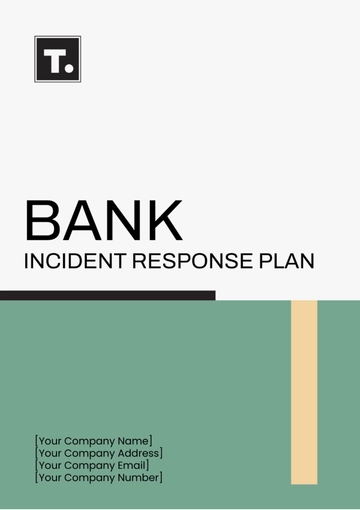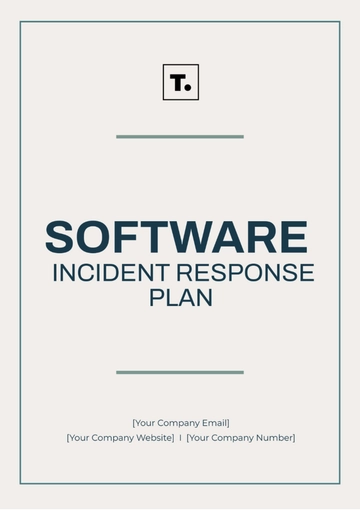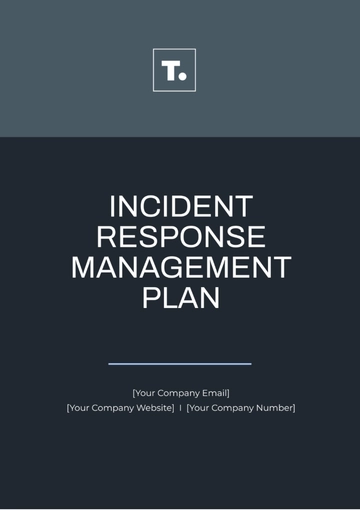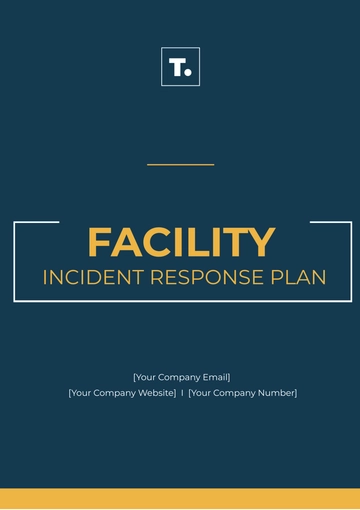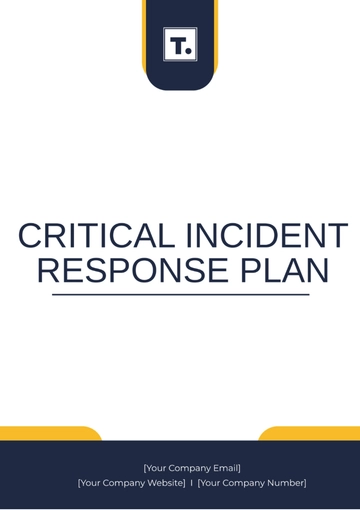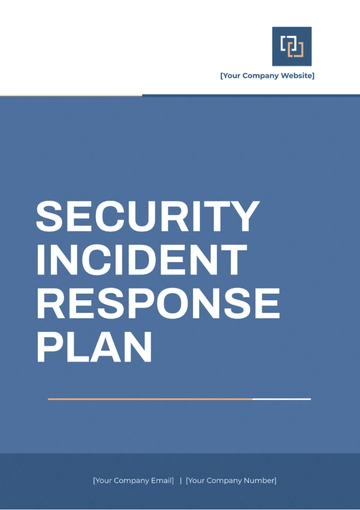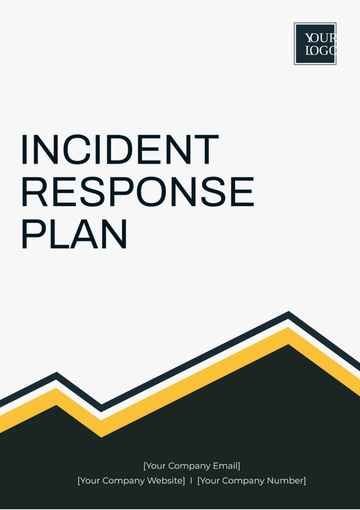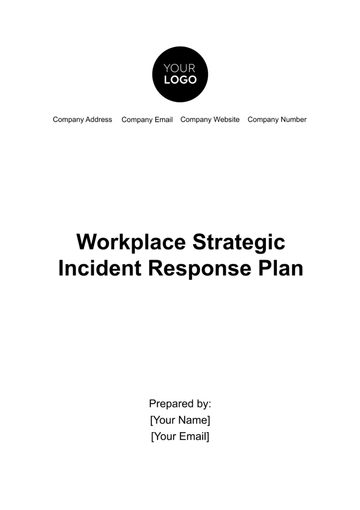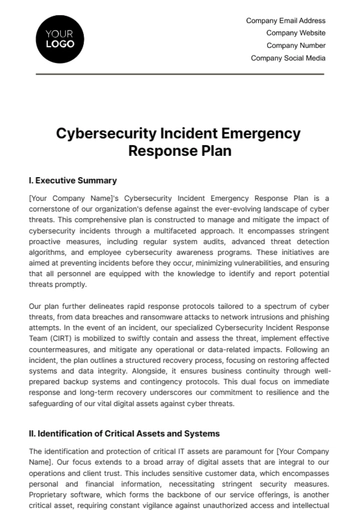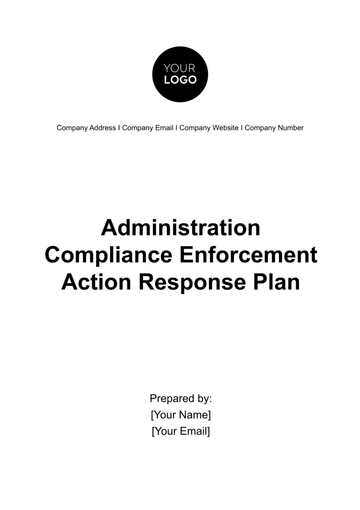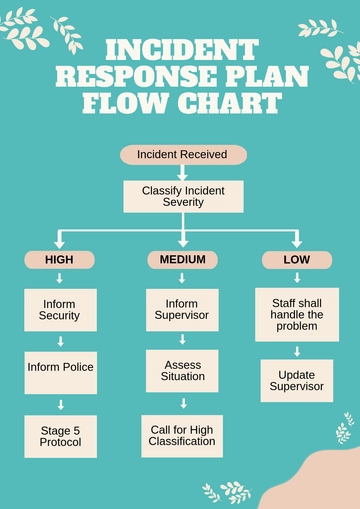Free Critical Incident Response Plan
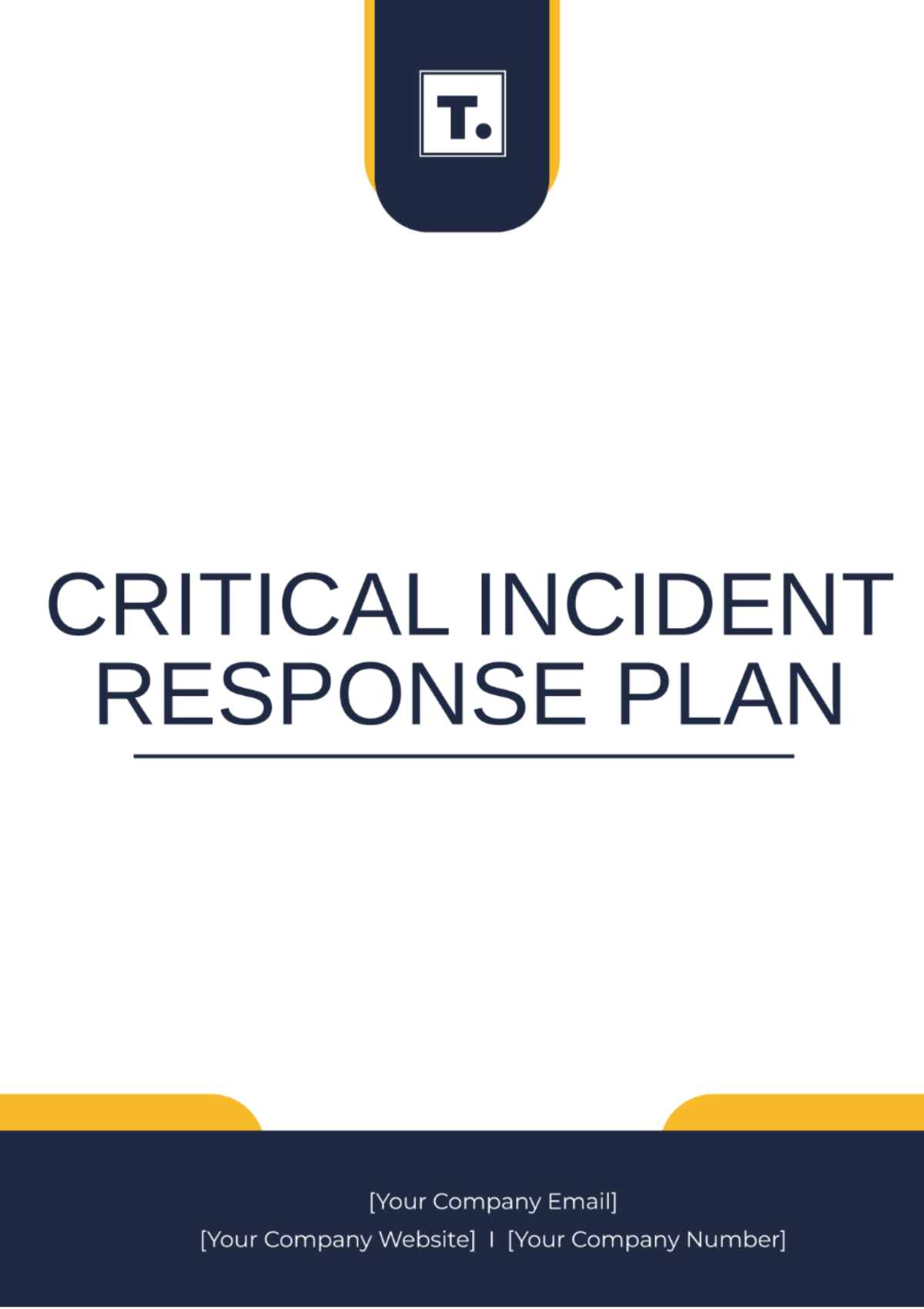
_____________________________________________________________________________________
_____________________________________________________________________________________
I. Introduction and Scope
The Critical Incident Response Plan (CIRP) outlines procedures and protocols for responding effectively to unexpected events or crises that could significantly impact the operations, reputation, or stakeholders of [Your Company Name]. The scope of this plan encompasses various types of critical incidents, including natural disasters, cybersecurity incidents, physical security threats, public health emergencies, environmental emergencies, supply chain disruptions, and reputation management crises.
_____________________________________________________________________________________
II. Roles and Responsibilities
Roles | Responsibilities |
|---|---|
Senior Management | Provide overall leadership and decision-making during a critical incident. |
Department Heads | Coordinate response efforts within their respective departments. |
Emergency Response Teams | Activate and lead response efforts according to established protocols. |
Human Resources | Support employee well-being and communication. |
IT Staff | Address technical aspects related to incident response and recovery. |
Security Personnel | Ensure the safety and security of personnel and assets. |
Public Relations | Manage external communications and reputation. |
External Partners | Collaborate with relevant external agencies, suppliers, and stakeholders as necessary. |
_____________________________________________________________________________________
III. Incident Classification
Incidents will be classified based on severity, impact, and urgency into the following categories:
Level 1 | Minor Incidents (Low impact, localized, easily manageable) |
Level 2 | Significant Incidents (Moderate impact, affecting multiple departments or locations) |
Level 3 | Major Incidents (High impact, widespread, requiring significant resources and coordination) |
_____________________________________________________________________________________
IV. Notification Procedures
Upon detection or confirmation of a critical incident, the Incident Response Team will be immediately notified through the designated communication channels, including:
Internal communication systems (e.g., email, phone, messaging platforms)
External communication channels (e.g., emergency contacts, regulatory authorities)
Automated alerts and monitoring systems (e.g., security alarms, IT alerts)
_____________________________________________________________________________________
V. Response Procedures
The response procedures will vary depending on the type and severity of the incident but may include the following general steps:
Assess the situation and gather relevant information.
Activate the appropriate response teams and resources.
Implement predefined action plans and mitigation strategies.
Coordinate communication and collaboration among stakeholders.
Monitor the situation and adjust response efforts as necessary.
Execute contingency plans to ensure business continuity and minimize disruptions.
_____________________________________________________________________________________
VI. Resource Management
An inventory of resources, facilities, equipment, and external support services will be maintained to support response and recovery efforts.
This includes:
Personnel | Trained emergency response teams and designated personnel. |
Facilities | Emergency response centers, alternate work locations. |
Equipment | Emergency supplies, communication devices, and medical kits. |
External Support | Contracts with emergency services, suppliers, and vendors. |
_____________________________________________________________________________________
VII. Continuity of Operations
Strategies and plans will be established to ensure critical functions and services continue during and after a critical incident.
This includes:
Identifying essential activities and processes.
Implementing backup systems and redundancies.
Establishing remote work capabilities.
Communicating with stakeholders about service availability and disruptions.
_____________________________________________________________________________________
VIII. Documentation and Reporting
Procedures will be in place to document incidents, collect data, and report to relevant authorities, stakeholders, and regulatory bodies.
This includes:
Incident logs and reports.
Communication records.
Damage assessments and recovery efforts.
Compliance documentation and regulatory reporting.
_____________________________________________________________________________________
IX. Review and Revision
The Critical Incident Response Plan will be regularly reviewed, evaluated, and updated to reflect changing threats, technologies, and organizational needs.
This includes:
Conducting periodic drills, exercises, and simulations.
Analyzing post-incident reviews and lessons learned.
Incorporating feedback from stakeholders and subject matter experts.
Ensuring compliance with legal and regulatory requirements.
_____________________________________________________________________________________
X. Conclusion
The Critical Incident Response Plan provides a comprehensive framework for preparing, responding to, and recovering from critical incidents effectively. By following established procedures and protocols, [Your Company Name] can mitigate risks, minimize disruptions, and safeguard the well-being of its personnel and stakeholders during times of crisis.
_____________________________________________________________________________________
- 100% Customizable, free editor
- Access 1 Million+ Templates, photo’s & graphics
- Download or share as a template
- Click and replace photos, graphics, text, backgrounds
- Resize, crop, AI write & more
- Access advanced editor
Ensure your organization is prepared for any crisis with the Critical Incident Response Plan Template from Template.net. This fully customizable and editable template is designed to be tailored to your specific needs. Easily modify it using our AI Editor Tool, ensuring your response plan is comprehensive and up-to-date. Stay prepared with Template.net.
You may also like
- Finance Plan
- Construction Plan
- Sales Plan
- Development Plan
- Career Plan
- Budget Plan
- HR Plan
- Education Plan
- Transition Plan
- Work Plan
- Training Plan
- Communication Plan
- Operation Plan
- Health And Safety Plan
- Strategy Plan
- Professional Development Plan
- Advertising Plan
- Risk Management Plan
- Restaurant Plan
- School Plan
- Nursing Home Patient Care Plan
- Nursing Care Plan
- Plan Event
- Startup Plan
- Social Media Plan
- Staffing Plan
- Annual Plan
- Content Plan
- Payment Plan
- Implementation Plan
- Hotel Plan
- Workout Plan
- Accounting Plan
- Campaign Plan
- Essay Plan
- 30 60 90 Day Plan
- Research Plan
- Recruitment Plan
- 90 Day Plan
- Quarterly Plan
- Emergency Plan
- 5 Year Plan
- Gym Plan
- Personal Plan
- IT and Software Plan
- Treatment Plan
- Real Estate Plan
- Law Firm Plan
- Healthcare Plan
- Improvement Plan
- Media Plan
- 5 Year Business Plan
- Learning Plan
- Marketing Campaign Plan
- Travel Agency Plan
- Cleaning Services Plan
- Interior Design Plan
- Performance Plan
- PR Plan
- Birth Plan
- Life Plan
- SEO Plan
- Disaster Recovery Plan
- Continuity Plan
- Launch Plan
- Legal Plan
- Behavior Plan
- Performance Improvement Plan
- Salon Plan
- Security Plan
- Security Management Plan
- Employee Development Plan
- Quality Plan
- Service Improvement Plan
- Growth Plan
- Incident Response Plan
- Basketball Plan
- Emergency Action Plan
- Product Launch Plan
- Spa Plan
- Employee Training Plan
- Data Analysis Plan
- Employee Action Plan
- Territory Plan
- Audit Plan
- Classroom Plan
- Activity Plan
- Parenting Plan
- Care Plan
- Project Execution Plan
- Exercise Plan
- Internship Plan
- Software Development Plan
- Continuous Improvement Plan
- Leave Plan
- 90 Day Sales Plan
- Advertising Agency Plan
- Employee Transition Plan
- Smart Action Plan
- Workplace Safety Plan
- Behavior Change Plan
- Contingency Plan
- Continuity of Operations Plan
- Health Plan
- Quality Control Plan
- Self Plan
- Sports Development Plan
- Change Management Plan
- Ecommerce Plan
- Personal Financial Plan
- Process Improvement Plan
- 30-60-90 Day Sales Plan
- Crisis Management Plan
- Engagement Plan
- Execution Plan
- Pandemic Plan
- Quality Assurance Plan
- Service Continuity Plan
- Agile Project Plan
- Fundraising Plan
- Job Transition Plan
- Asset Maintenance Plan
- Maintenance Plan
- Software Test Plan
- Staff Training and Development Plan
- 3 Year Plan
- Brand Activation Plan
- Release Plan
- Resource Plan
- Risk Mitigation Plan
- Teacher Plan
- 30 60 90 Day Plan for New Manager
- Food Safety Plan
- Food Truck Plan
- Hiring Plan
- Quality Management Plan
- Wellness Plan
- Behavior Intervention Plan
- Bonus Plan
- Investment Plan
- Maternity Leave Plan
- Pandemic Response Plan
- Succession Planning
- Coaching Plan
- Configuration Management Plan
- Remote Work Plan
- Self Care Plan
- Teaching Plan
- 100-Day Plan
- HACCP Plan
- Student Plan
- Sustainability Plan
- 30 60 90 Day Plan for Interview
- Access Plan
- Site Specific Safety Plan
